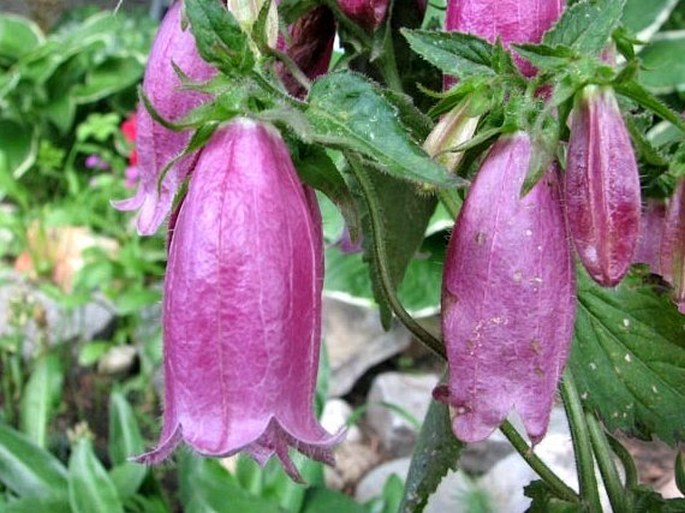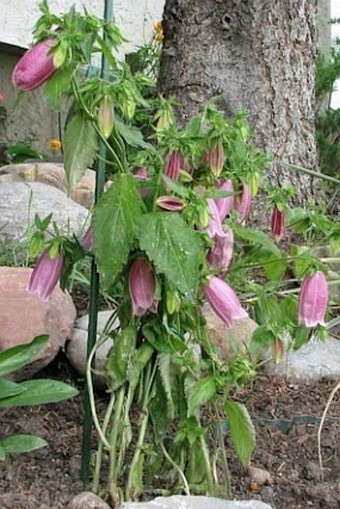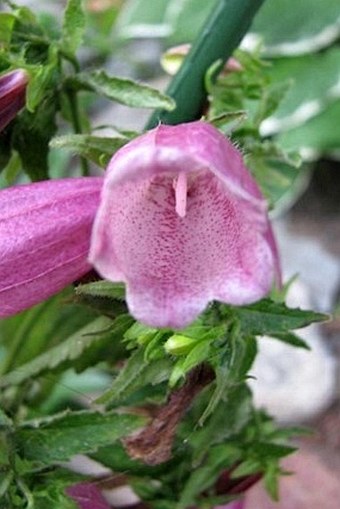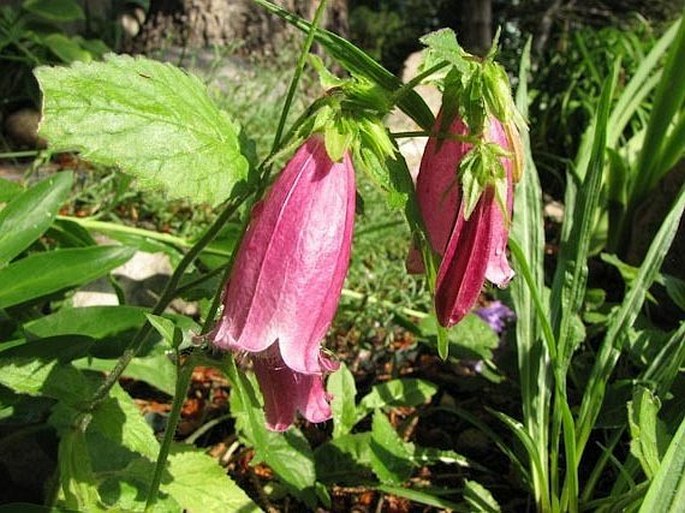Syn.: Campanula nobilis Lindl., Campanula van-houttei Carrière, Campanula violifolia Lam.
Family: Campanulaceae Juss.

Distribution: China (Gansu, Hebei, Heilongjiang, Henan, Hubei, Jilin, Liaoning, Nei Monggol, Shaanxi, Shanxi, Sichuan), Japan (Hokkaido, Honshu, Kyushu, Shikoku), Korea and Russia (Eastern Siberia and Far East). Naturalized in New Hampshire and Connecticut.
Ecology: Forests, forest margins, clearings, meadows, below 2300 m. Blooms from June to September.
Description: Perennial herb, stems erect, robust, 20–100 cm tall, usually branched above, setose. Basal leaves long petiolate, cordate to ovate; stem leaves ovate to lanceolate or triangular, margins irregularly dentate, apex acute, lower ones petiolate, upper ones sessile. Flowers terminal on top of main stems and branches, pendent; calyx lobes narrowly triangular, reflexed; corolla white, yellow or pink, purple or red punctate inside, tubular campanulate, 3–6.5 cm long. Fruit is a capsule broadly campanulate or obconic. Seeds grey brown, oblong or elliptic, slightly compressed, 1 mm long, smooth.
Use: Widely cultivated in gardens; self seeding but picky about the substrate. Can thrive in total neglect.



These images were taken in culture.


